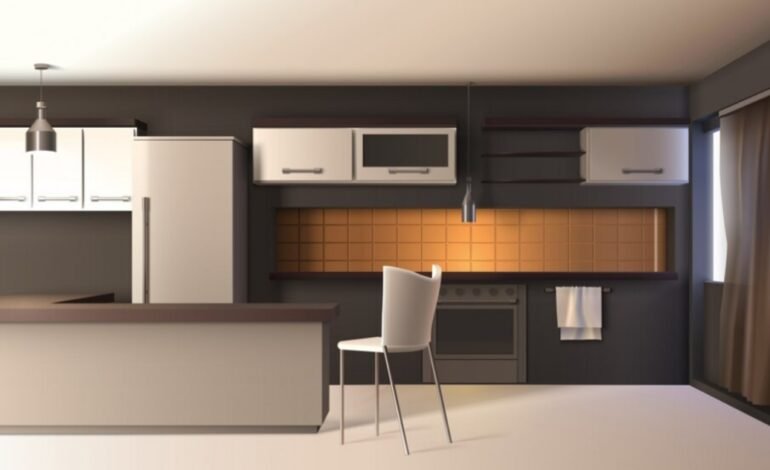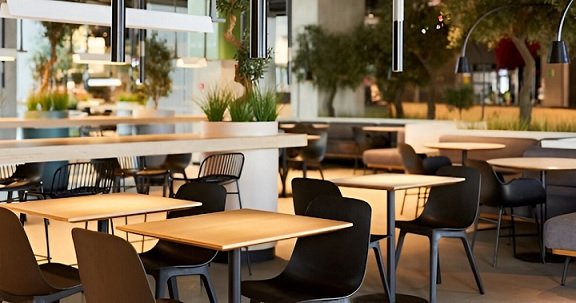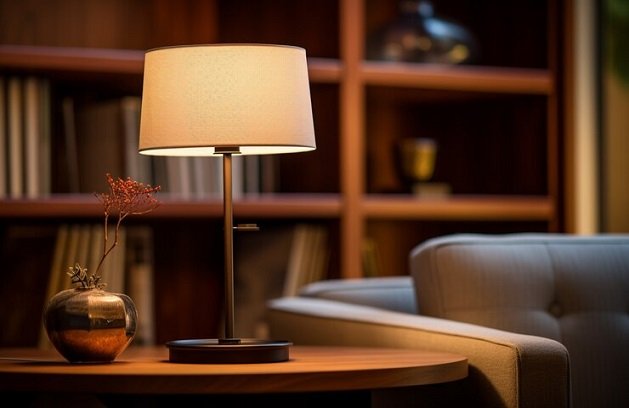Streamlining Your Kitchen Workflow

The kitchen, often described as the heart of a home serves as a space where both functionality and style intersect. As architects our responsibility goes beyond creating pleasing surroundings; we aim to craft environments that boost efficiency and facilitate smooth operations. Enhancing your kitchens workflow involves a combination of organization, ergonomic considerations and the integration of technology. This piece explores the principles and methods that can elevate any kitchen into a model of efficiency and sophistication.
Understanding Kitchen flow
Kitchen flow refers to the series of tasks carried out in the kitchen encompassing food preparation, cooking and cleaning. A organized kitchen flow reduces movements while enhancing productivity. Central, to this idea is the concept of the kitchen work triangle—a guideline positioning the sink, refrigerator and stove at three points on a triangle for easy navigation between these essential areas.
The Kitchen Work Triangle
- Sink: Regarded as an element in any kitchen space the sink plays a role in food prep and washing up. It should be conveniently located near both the refrigerator and stove.
- Refrigerator: Placed for access to ingredients it serves as the starting point, for meal preparation.
- Stove: In the kitchen it’s essential to position the stove in a way that minimizes distractions and provides access, to the sink and refrigerator.
Following the concept of the kitchen work triangle helps reduce movement and decreases the chances of accidents resulting in an efficient cooking process. The idea is to create zones that optimize workflow and efficiency.
Zones of Efficiency
While the kitchen work triangle is a foundational principle, modern kitchens benefit from a more zonal approach to streamline workflow further. Here, the kitchen is divided into dedicated zones, each designed for specific tasks.
- Preparation Zone: This area, often located between the refrigerator and the sink, includes ample counter space, cutting boards, knives, and food processors. Having all preparation tools within arm’s reach speeds up the cooking process.
- Cooking Zone: Situated around the stove and oven, this zone should include pots, pans, spatulas, and other cooking utensils. Proximity to the sink aids in quick transfers of hot items and immediate cleanup.
- Cleaning Zone: Focused around the sink and dishwasher, this zone includes waste disposal, cleaning supplies, and drying racks. An efficient layout reduces the time spent transitioning between washing, drying, and storing items.
- Storage Zone: Divided into consumables and non-consumables, this zone encompasses cabinets, pantry, and refrigerator. Consumables include food items, while non-consumables cover cookware, utensils, and tableware.
- Serving Zone: This area can include plate warmers, serving dishes, and an easy pathway to the dining area. A dedicated space for plating and serving can significantly reduce clutter and streamline meal presentation.
Ergonomics and Accessibility
Ergonomics is the science of designing a workspace that fits the user’s needs, reducing strain and enhancing productivity. In kitchen layouts sign, this translates to ensuring that work surfaces, storage, and appliances are positioned at optimal heights and distances.
- Counter Heights: Standard counter heights range from 34 to 36 inches, but customizing heights based on the primary user’s stature can reduce back strain. Adjustable counters can also be beneficial in multi-user kitchens.
- Storage Solutions: Pull-out shelves, lazy Susans, and deep drawers allow easier access to items, minimizing the need to bend or stretch. Vertical storage solutions maximize space and keep frequently used items within easy reach.
- Appliance Placement: Ovens, microwaves, and dishwashers should be installed at comfortable heights to avoid excessive bending or lifting. Wall-mounted appliances save counter space and provide better accessibility.
- Lighting: Adequate lighting reduces eye strain and enhances safety. Task lighting, such as under-cabinet lights, illuminates work areas, while ambient lighting ensures overall visibility.
Technology Integration
Modern technology plays a significant role in streamlining kitchen workflows. Smart appliances, automation, and connectivity bring efficiency and convenience to new heights.
- Smart Appliances: Wi-Fi-enabled refrigerators, ovens, and dishwashers allow remote control and monitoring. Pre-setting cooking times, temperatures, and notifications on ingredient expiration dates can significantly cut down preparation time.
- Voice Assistants: Devices like Amazon Echo or Google Home can set timers, find recipes, and control smart appliances, enabling hands-free operation which is particularly useful when multitasking.
- Automated Systems: Smart faucets with motion sensors, automated lighting systems, and temperature controls enhance convenience and efficiency. These systems not only save time but also contribute to energy conservation.
- Recipe Apps and Digital Cookbooks: Integrating tablets or smart displays in the kitchen can provide instant access to recipes, cooking videos, and shopping lists, making meal preparation smoother and more enjoyable.
Sustainable Practices
Incorporating sustainability into kitchen design not only benefits the environment but also enhances workflow efficiency through thoughtful resource management.
- Energy-Efficient Appliances: Selecting appliances with high energy ratings reduces utility costs and environmental impact. Induction cooktops, for example, heat food more quickly and efficiently than traditional gas or electric stoves.
- Water Conservation: Installing low-flow faucets and energy-efficient dishwashers can significantly reduce water usage. Additionally, composting systems and recycling bins integrated into the design promote eco-friendly practices.
- Sustainable Materials: Using eco-friendly materials like bamboo, recycled glass, and sustainable wood for countertops and cabinets reduces the environmental footprint and often comes with durability benefits.
Customization and Personalization
A truly streamlined kitchen workflow is one that is tailored to the individual needs and preferences of its users. Customizing the kitchen layout, storage solutions, and appliance selection based on specific cooking habits and lifestyle can greatly enhance efficiency.
- Bespoke Layouts: Designing a kitchen layout that aligns with personal cooking styles, such as a dedicated baking station for avid bakers or a large island for those who entertain frequently, can optimize workflow.
- Tailored Storage: Custom cabinets and drawers designed to fit specific items, such as spice racks, knife drawers, and pull-out pantries, ensure that everything has its place, reducing clutter and search time.
- Unique Features: Features like integrated herb gardens, built-in coffee stations, or wine coolers can add convenience and reflect personal tastes, making the kitchen a more enjoyable space to work in.
Future Trends in Kitchen Design
The future of kitchen design lies in further integration of technology, greater emphasis on sustainability, and innovative materials and layouts that adapt to evolving lifestyles.
- Augmented Reality (AR) and Virtual Reality (VR): These technologies can aid in the design process, allowing homeowners to visualize and interact with their kitchen designs before implementation. This can ensure that the final layout meets their needs perfectly.
- Advanced Robotics: The introduction of robotic chefs and assistants could revolutionize kitchen workflows, handling tasks such as chopping, stirring, and even cooking, freeing up time for more complex culinary tasks.
- Smart Kitchen Surfaces: Future countertops might incorporate touchscreens and inductive heating elements, turning any surface into a multifunctional workspace. These smart surfaces could display recipes, control appliances, and provide real-time feedback on food preparation.
- Circular Kitchen Design: Emphasizing zero waste and closed-loop systems, future kitchens might include features like built-in composting units, water recycling systems, and modular components that can be easily replaced or upgraded.
Conclusion
Streamlining your kitchen workflow involves a multifaceted approach that combines intelligent design principles, ergonomic considerations, technological advancements, and sustainable practices. By understanding and implementing these elements, architects can create kitchens that are not only aesthetically pleasing but also highly functional and efficient. The ultimate goal is to design spaces that enhance the culinary experience, making cooking and cleaning tasks more enjoyable and less time-consuming. Integrating kitchen remodeling ideas can significantly contribute to achieving this goal by introducing innovative solutions and modern trends.
As the demands and lifestyles of homeowners evolve, so too must our approach to kitchen design. Staying abreast of technological advancements and sustainable practices ensures that we continue to create kitchens that meet the needs of the present while anticipating the challenges of the future. Through thoughtful design and innovation, including incorporating cutting-edge kitchen remodeling ideas, the kitchen can truly become a seamless extension of the home, embodying the perfect blend of form and function.














